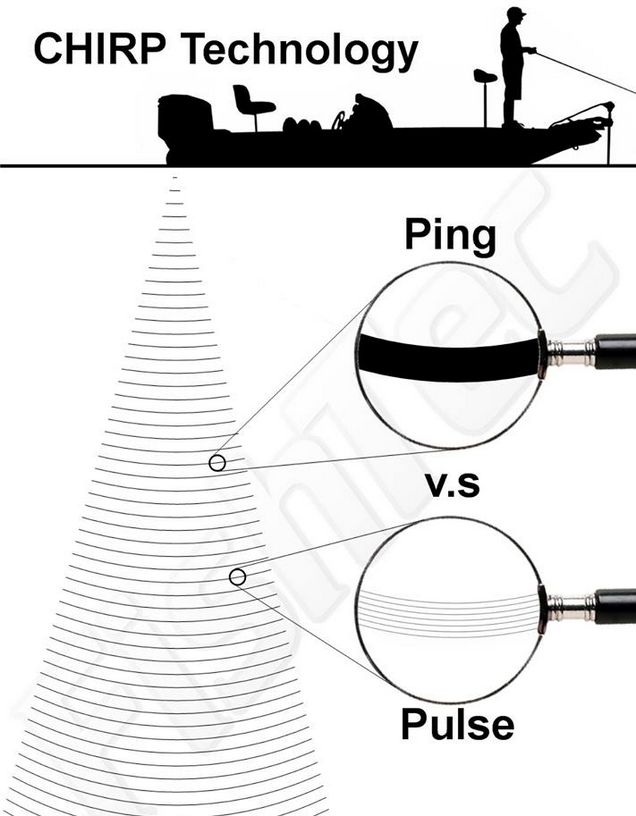Understanding Sonar
Lowrance and SIMRAD Sonar
CHIRP vs Traditional Sonar
CHIRP (Compressed High-intensity Radar pulse) is a Frequency-modulated sound (Sonar) pulse.
CHIRP sounders transmit a long pulse across a wide frequency band
– Traditional sounders operate at 50kHz and 200kHz. This limits what targets can be detected in the water column. – Any object(s) below the boat that are detected in the frequency band, will be seen on the display
The amount of energy required for the signal to reach the bottom in deep water when using a low frequency signal (say 50kHz), requires a long sonic pulse (possibly 40m in length). Any objects that are closer together than the length of this pulse will not show up as separate objects on the Fish Finder screen. CHIRP technology modifies the pulse that is sent by the Transducer.
Instead of transmitting a distinct pulse beneath the boat, CHIRP technology modifies the pulse so the a range of frequencies are transmitted by the transducer; say 28 to 60 kHz, or 130 to 210 kHz, or 42 to 65 kHz.
When you transmit a modulated pulse across these ranges, targets that are closer together than a particular pulse length, reflect that pulse at a different frequency to those further apart than the pulse length, and each will show up separately on the monitor.
This range or pulse sweep is known as the bandwidth, hence the term broadband Sonar
The echo signal return from a target, is the same as the frequency with which the target was struck, so two targets even close together in shallow water will return a slightly different frequency signal.
The result is quite simply, stunningly improved separation and detail.
Airmar CHIRP in detail - Technical - Download

